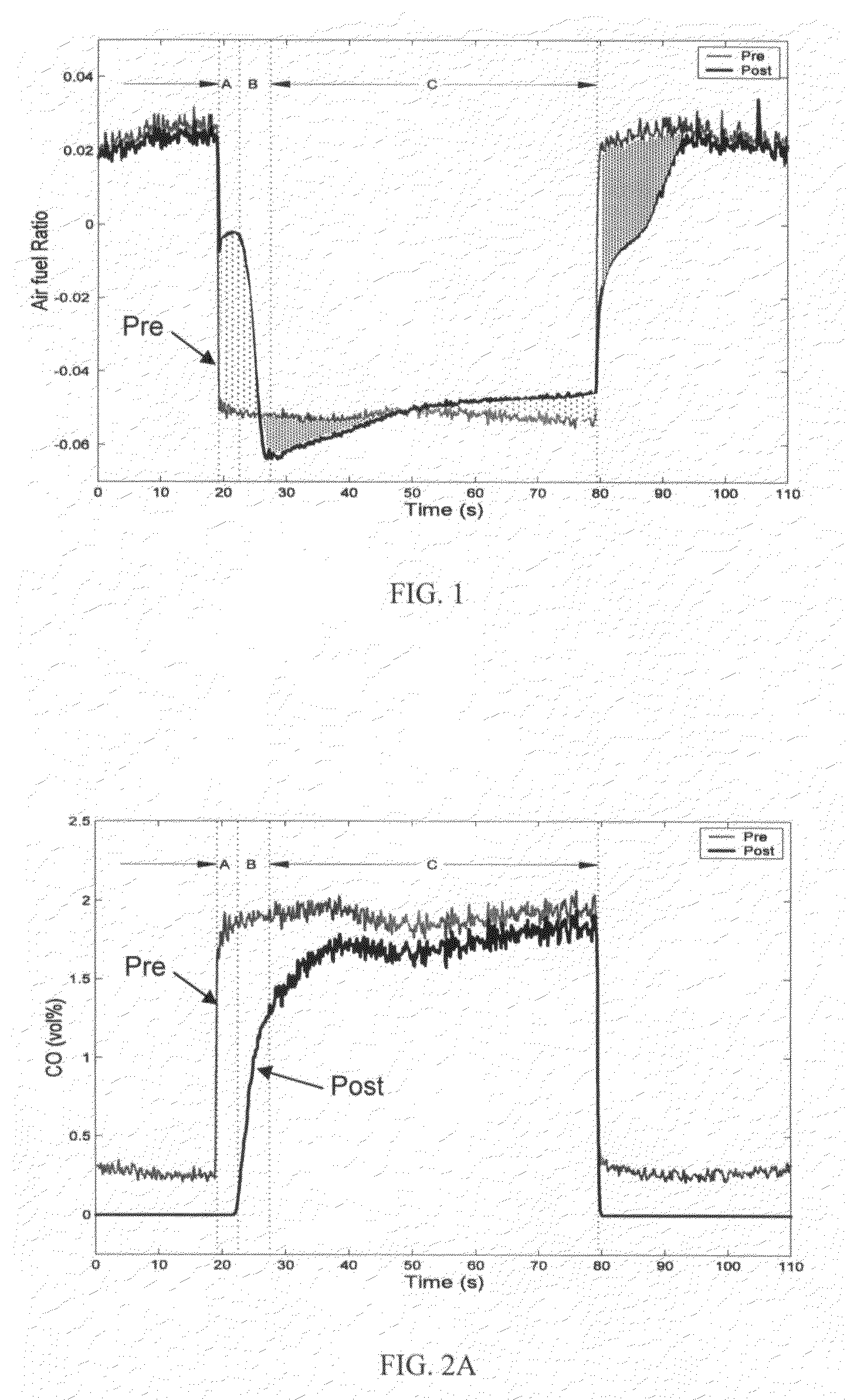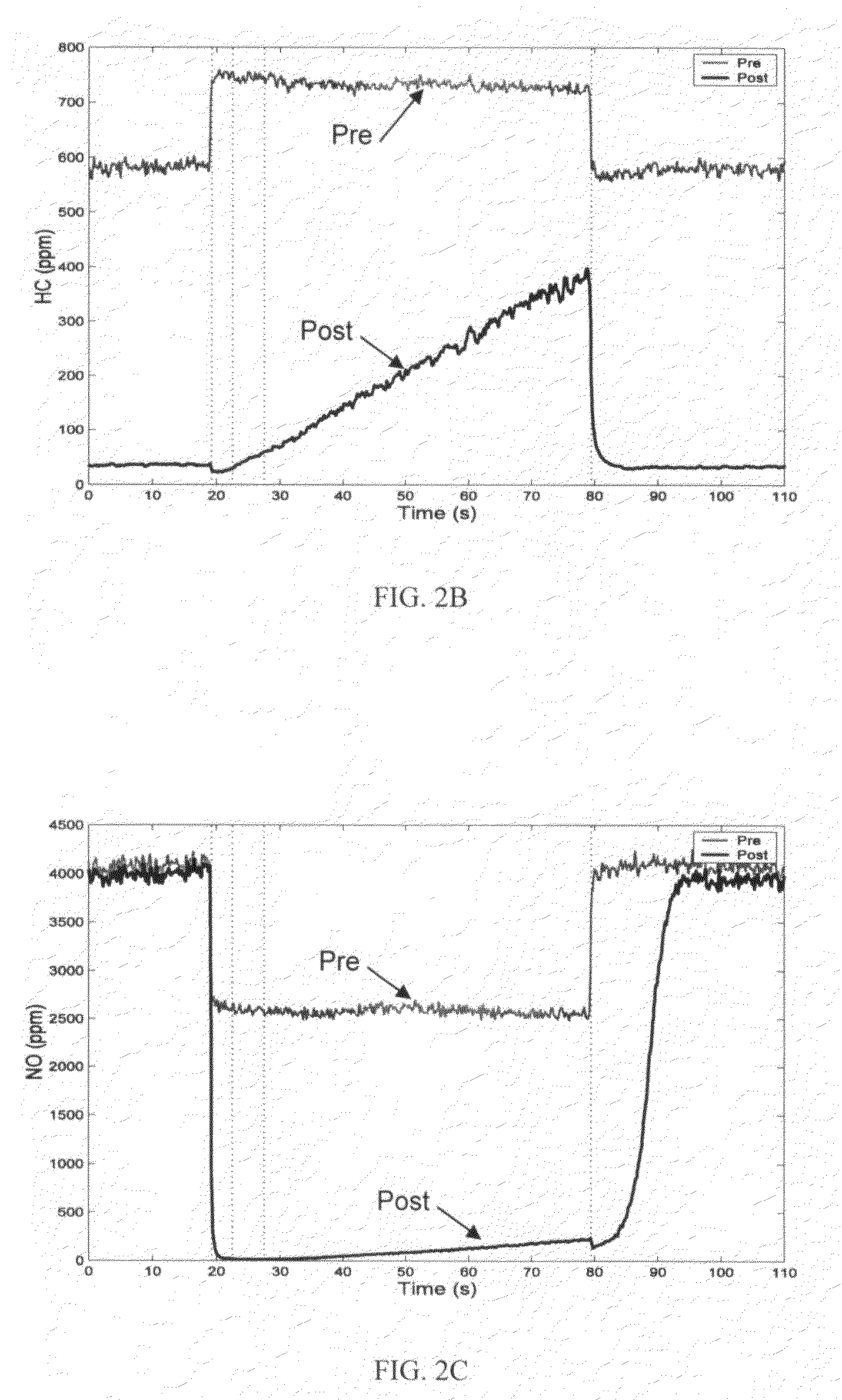Method of on-board diagnostic catalyst monitoring
- Summary
- Abstract
- Description
- Claims
- Application Information
AI Technical Summary
Benefits of technology
Problems solved by technology
Method used
Image
Examples
Embodiment Construction
[0025]Pre- and post-catalyst exhaust gas oxygen (EGO) sensors are traditionally used to monitor oxygen storage capacity for on-board diagnostic (OBD) purposes. The present invention uses the same sensors instead to monitor catalyst-promoted hydrogen generation, exploiting the sensors' otherwise undesirable sensitivity to the hydrogen content in the exhaust. This approach to catalyst health diagnosis has advantages because hydrogen generation and hydrocarbon (HC) conversion efficiency both depend on the degree of activation (or deactivation) of the catalyst surface, and are therefore strongly correlated to each other. One advantage of the approach is that it is more directly related to catalyst deterioration or malfunction as defined (in terms of HC emissions levels) under current OBD legislation.
[0026]Sensor distortion is generally undesirable because it degrades the performance of catalyst control and OBD strategies. The present invention exploits sensor distortion, however, as a m...
PUM
 Login to View More
Login to View More Abstract
Description
Claims
Application Information
 Login to View More
Login to View More - R&D
- Intellectual Property
- Life Sciences
- Materials
- Tech Scout
- Unparalleled Data Quality
- Higher Quality Content
- 60% Fewer Hallucinations
Browse by: Latest US Patents, China's latest patents, Technical Efficacy Thesaurus, Application Domain, Technology Topic, Popular Technical Reports.
© 2025 PatSnap. All rights reserved.Legal|Privacy policy|Modern Slavery Act Transparency Statement|Sitemap|About US| Contact US: help@patsnap.com



